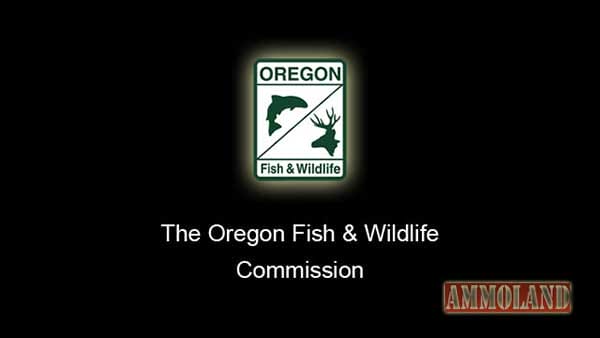

Salem, OR -(Ammoland.com)- The Oregon Fish and Wildlife Commission approved the acquisition of two parcels of land in the Willamette Valley that will provide important fish and wildlife habitat as well as outdoor recreation opportunities.
The Coyote Creek NE parcel consists of 225 acres of prairie habitat adjacent to Fern Ridge Wildlife Area near Eugene, and Hayden Island near Salem is one of the largest and most intact riparian forests along the middle Willamette River. The acquisitions will be funded through Bonneville Power Administration and other sources as part of BPA’s wildlife habitat mitigation programs in the Willamette Valley.
Both acquisitions provide important habitat for fish and wildlife species identified in the Oregon Conservation Strategy. The Commission adopted rules to implement the Columbia River Fisheries Transition Program. The program establishes a grant fund that will pass through ODFW to qualifying county programs, which would then distribute funds to holders of Oregon Columbia River gill net vessel permits as specified in statute. Although commercial fishing representatives asked the Commission to delay implementation, the Commission adopted the rules citing the 2013 statute that requires ODFW to establish the program.
The program is funded to provide assistance for economic harm and required fishing gear changes during a transition period established under the Lower Columbia River Fish Management Reform policies previously adopted by the Commission.
The Commission also approved two fish passage waiver requests from the Coos Bay/North Bend Water Board related to upper and lower Pony Creek dams near Coos Bay. The first approval amends an existing waiver for the Upper Pony Creek Dam so that supplemental water releases from the dam will be replaced with habitat restoration on the South Arm of Matson Creek. The second fish passage waiver is for Lower Pony Creek Dam, where the Water Board will restore stream habitat on the North Arm of Matson Creek in lieu of providing fish passage at the dam. This waiver request is for future seismic and spillway upgrades that will likely trigger Oregon’s fish passage policy.
In other business, the Commission also:
- Approved $651,452 for two restoration and 9 enhancement projects recommended by the Fish Restoration and Enhancement Board, and appointed two new members to the Board. Richard Heap of Brookings will represent sport fishing interests on the Board. Heap is a retired fish and wildlife manager from Nevada and has previously served on the ODFW Salmon and Trout Advisory Committee. Cary Johnson of Astoria will represent gill net interests. He is a fourth generation gill net fisherman and an active participant in the fishery.
- Agreed to enter into a Memorandum of Understanding with the Confederated Tribe of Siletz Indians that will create a Special Gathering Permit for clams to be used for ceremonial and other non-commercial uses. The permit would allow the harvest of seven different species of clams in areas of Lincoln County that are open to recreational harvest.
- Continued funding for Access and Habitat’s Hancock Forest Management Access program, which provides public hunting access to 292,000 acres of private forestland in northeast Oregon.
The Fish and Wildlife Commission is the policy-making body for fish and wildlife issues in Oregon. It usually meets monthly. The next meeting will be Jan. 9, 2015 in Salem.
About The Oregon Fish and Wildlife Commission
The Oregon Fish and Wildlife Commission consists of seven members appointed by the governor for staggered four-year terms. One commissioner must be from each congressional district, one from east of the Cascades and one from the west of the Cascades. The Commission was formed July 1, 1975 when the formerly separate fish and wildlife commissions were merged. ODFW consists of the commission, a commission appointed director and a statewide staff of approximately 1000 permanent employees. ODFW operates under ORS chapters 496 through 513. Commissioners formulate general state programs and policies concerning management and conservation of fish and wildlife resources and establishes seasons, methods and bag limits for recreational and commercial take.
